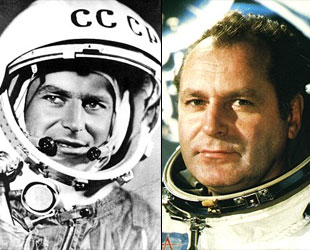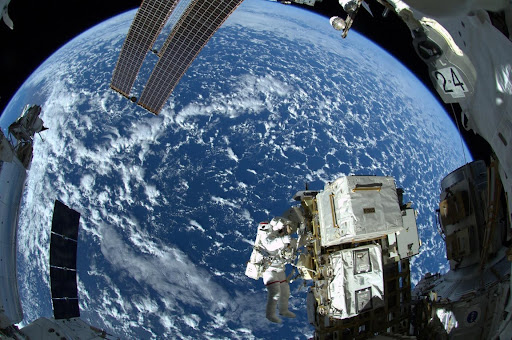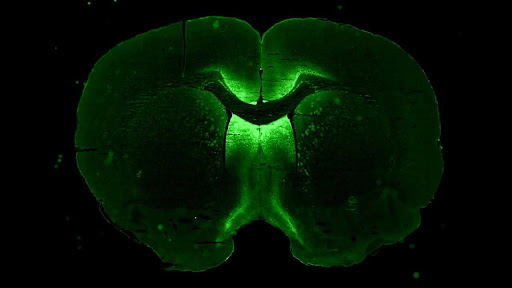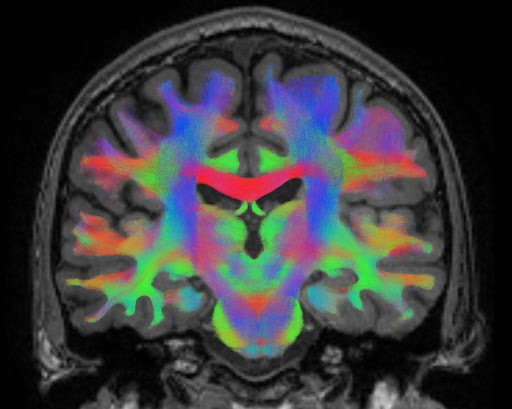Ever wondered what happens to the human brain as the astronauts go into outer space? Humans came to know about this in the early 60s.
On August 6, 1961, Gherman Titov embarked on the Soviet Union’s second human-crewed space flight aboard the Vostok-2 spacecraft, marking a significant chapter in space exploration.
Everything seemed on course until Titov unexpectedly experienced nausea and became the first astronaut to vomit in space, revealing the challenges of adapting to the extraterrestrial environment. His deteriorating condition was termed Space Adaptation Syndrome.
In an attempt to recover, Titov slept for eight hours during the mission, hoping for improvement. However, his condition persisted. Remarkably, after completing 12 orbits, Titov miraculously adapted to the space conditions, shedding light on the human body’s resilience. Despite the initial struggles, he emerged from the agony feeling perfectly fine.
Soviet scientists attributed Titov’s condition to a disturbance in his vestibular system. His experience encouraged the Soviets to delve deeper into the effects of space travel on the human body, which became one of the primary objectives of subsequent missions, Vostok 3 and 4. The focus was on a comprehensive study of space neurology—an essential step in unraveling the mysteries of human adaptation to the cosmos.
This event marks a crucial turning point in the history of space exploration, highlighting the obstacles and achievements faced in the pursuit of mastering the final frontier.

Space neuroscience has emerged as a crucial area of research, aiming to explore the complex interplay between the human brain and space or the extraterrestrial environment. This field encompasses a wide range of topics, including the impact of microgravity, altered spatial orientation, and other stressors encountered during space travel.
In this article, we will dive into space neuroscience, its significance, when and why it was started, and some current experiments and research in Space or the International Space Station (ISS).

What is Space Neuroscience?
Space neuroscience studies how the central nervous system (CNS) functions during spaceflight. Our senses provide essential information about our surroundings, which helps us orient ourselves. Understanding the potential neurological implications of space travel is crucial to ensure the safety and well-being of astronauts.
Space neuroscience is a vital field that helps us understand how the human body functions in space. By studying this field, we can develop strategies to help astronauts adapt to the unique challenges of space travel and ensure their health and safety.
Significance of Gravity
Our senses provide vital information about our surroundings, which helps us orient ourselves. Gravity is crucial to control body functions such as posture, locomotion, and eye movement. In the absence of gravity, our sense of spatial orientation can be disrupted, leading to errors in perception. This can significantly impact our ability to navigate and perform tasks in space.
For example, astronauts may experience difficulty maintaining their posture or coordinating their movements with balance. They may also experience problems with eye movement, which can affect their vision. The vestibular system plays a crucial role in creating a sense of balance and spatial orientation. In microgravity conditions, the vestibular system can become disturbed, leading to problems with balance and coordination.
Prolonged space travel brings about micro and macrostructural changes in the distribution of cerebrospinal fluid (CSF), which cushions and protects the brain in case of sudden shocks or concussions. Alterations in CSF distribution can lead to increased pressure on the brain, resulting in symptoms like headaches, nausea, and vision problems.
Another stressor in space travel is increased exposure to cosmic radiation, which can cause damage to the central nervous system, cognitive function, and even death. Hypercapnia, an excessive amount of carbon dioxide in the blood, can occur in space, leading to headaches, fatigue, and reduced cognitive function.
Furthermore, space travel can cause changes in cognitive performance and behavior. These changes can be evident as decreased attention span, memory issues, and impaired decision-making abilities. These effects are likely due to the micro and macrostructural changes in grey matter that occur during space travel.
Neurological Research in Space
The NASA Neuroscience program delves into the impact of spaceflight on the human brain, focusing on how living in altered gravity environments affects astronauts’ sensory and motor functions. Astronauts may experience nausea and disorientation initially, adapting over time to move more efficiently.
The Neuroscience team investigates these effects to mitigate risks to astronaut performance, conducting field tests near landing sites and utilizing advanced technologies like MRI to measure brain changes. Understanding these adaptive changes is crucial for developing sensorimotor countermeasures to enhance crew safety and mission success.

Neuronix
Funded by the ISS National Lab, Neuronix is a study that employs 3D neuron cultures in microgravity to explore gene therapy’s potential for treating paralysis and neurological conditions like Alzheimer’s.
In July 2023, scientists from Axonis Therapeutics and ISS National Lab initiated an experiment aiming to utilize gene therapy in microgravity to address disorders such as Alzheimer’s and Parkinson’s disease.
The research involves transforming induced pluripotent stem cells (IPSCs) into various brain cell types, including neurons. iPSCs are stem cells derived from the skin or blood of a person and can be reprogrammed to convert into any cell.
These cell cultures will be sent to the ISS, which will assemble into 3D spheroids, creating a model brain for further testing. Because these models are crafted from the patient’s stem cells, they hold promise for personalized treatments tailored to that specific patient.
Amyloid Fibrils
In Alzheimer’s disease, beta-amyloid (Aβ) peptides – a chain of 42 amino acids- undergo abnormal processing, forming tiny, sticky protein fragments that tend to clump together, forming larger structures known as amyloid plaques. Over time, these plaques accumulate in the spaces between nerve cells in the brain.
The beta-amyloid peptides can further assemble into long, thread-like structures known as amyloid fibrils, which are considered key players in causing Alzheimer’s disease. The accumulation of amyloid fibrils and plaques is associated with toxicity to nerve cells. This can disrupt communication between nerve cells and contribute to the degeneration of brain tissue, leading to the cognitive decline characteristic of Alzheimer’s disease.
Recent research revealed that amyloid fibril formation is suppressed in microgravity conditions. The implications of this finding extend to the potential impact of space travel on neurodegenerative diseases. It suggests that the altered gravitational environment in space might influence the aggregation of beta-amyloid peptides, offering a unique perspective on the underlying mechanisms of Alzheimer’s disease.

Brain-DTI
ESA’s Brain-DTI (Diffusion Tensor Imaging) experiment employs advanced MRI brain scans to investigate the impact of spaceflight on the brain. This study collects brain MRI scans from astronauts of the European Space Agency (ESA) and cosmonauts from the Russian Space Agency (Roscosmos). The primary goal is to understand how astronauts’ brains adapt to spaceflight and how the brain’s structure changes after space missions.
The Brain-DTI study has been awarded the Compelling Results award. It has already revealed some areas of the brain that adapt to new experiences based on conflicting signals from the body.
While the research is ongoing, it has begun shedding light on the brain’s plasticity — its ability to rewire in response to new stimuli. These findings may have implications for rehabilitation strategies for brain diseases and injuries on Earth.
The Brain-DTI experiment is integrated into a group of psychological and physiological measurements taken for the Standard Measures investigation and others. These studies collectively explore how the body, including the brain, undergoes changes during missions of varying durations.
Brain Aging in Space
Published in 2022, the research paper titled “Monitoring the Impact of Spaceflight on the Human Brain” delves into the effects of spaceflight on the brain and its aging process. The study, conducted by researchers from the University of California, San Diego (UCSD), aims to understand how microgravity, radiation, and other space-related factors influence the brain’s aging process at a molecular level.
The study found that long-term exposure to radiation and microgravity can lead to changes in the brain’s structure and functions. These changes are more pronounced than shorter missions and aging, particularly affecting fluid shifts and brain regions associated with sensorimotor functions. The findings could benefit future astronauts and contribute to strategies for safeguarding the human brain against cognitive decline.
CIPHER Studies
The CIPHER (Complement of Integrated Protocols for Human Exploration Research) studies conducted by NASA involve 14 multi-disciplinary investigations that carefully examine how spaceflight impacts various aspects of the human body. These studies focus on understanding the effects of spaceflight on bone and joint health, brain and behavior, cardiovascular fitness, vision changes, and other physiological and psychological parameters.
CIPHER is researching to understand how our bodies adapt and change over different timeframes in space. The study analyzes three to six weeks of short-duration, standard six-month, and longer missions extending up to a year. This approach provides a comprehensive understanding of how the body adjusts and transforms over prolonged periods in space. CIPHER examines astronauts after their return to Earth through immediate post-mission testing. This provides insights into how the body adjusts to Earth’s gravity after being in space.
Briefly, CIPHER is a meticulous scientific exploration that aims to comprehensively understand the physiological dynamics of humans during space travel and their subsequent return to Earth’s environment.
In short, space neuroscience has become an essential tool in our quest to conquer the final frontier. It helps us understand how the human brain copes with the challenges of space travel. Groundbreaking research in this field includes studies of Gherman Titov’s pioneering journey and modern experiments like Brain-DTI and Neuronix. This research unravels the complexities of neurological changes induced by space travel. The knowledge we gain from space neuroscience improves the safety and success of future space missions. It also has the potential to revolutionize healthcare on Earth by providing insights into neurological disorders and advancing our understanding of human adaptability.
References:
- https://stemcell.ucla.edu/induced-pluripotent-stem-cells
- https://www.ncbi.nlm.nih.gov/pmc/articles/PMC7750487/
- https://www.nature.com/articles/s41380-021-01249-0
- https://scispace.esa.int/esa-braindti-wins-award/
- https://www.uantwerpen.be/en/research-groups/lab-for-equilibrium-investigations-and-aerospace/research-projects/ongoing-projects/brain-dti/
- https://roundupreads.jsc.nasa.gov/roundup/2081
More by the Author: The Hidden Culprit of Winter Smog- Temperature Inversion

Adnan Baig is a space science graduate who also served as a student research assistant at the Leibniz Institute of Astrophysics, Potsdam, Germany. He has co-authored several international research publications. Adnan is interested in space research, astrophysics, environmental science, nature photography, writing, reading and watching movies and anime.

